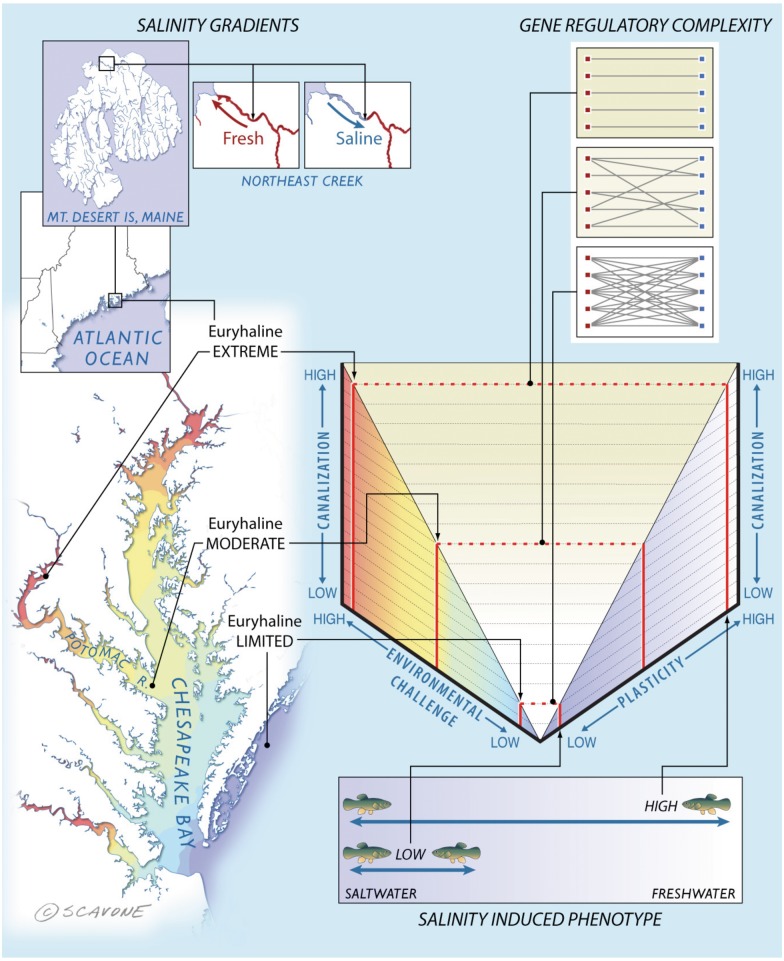Fig. 5.
A conceptual model of the functional relationships between environmental challenge, plasticity, and canalization. We propose (center graph) that increasing environmental challenge requires greater plasticity; a trait that natural selection enables by reducing complexity in gene regulatory networks and results in decreased gene expression variation. This generalizable model is highlighted in the surrounding panels with the results observed in the current study. Salinity gradients—Killifish prefer seawater environments, yet some populations can inhabit a wide range of salinities. Northern populations in Maine, United States, experience daily tidal influxes of freshwater. Similarly, a population living in the Potomac River thrives in freshwater. Both of these populations face the greatest environmental challenge due to the increased energetic costs of maintaining osmotic balance compared with mesohaline and coastal populations living in brackish water and seawater, respectively. Salinity induced phenotype—phenotypic plasticity enables populations to osmoregulate by modulating gill morphology to either a seawater or freshwater type. The Potomac River and Maine populations are capable of extreme osmotic plasticity. Gene regulatory complexity—this morphological transformation is regulated by a discrete set of genes that show canalized expression patterns coinciding with plasma chloride levels, which are also canalized in these fish. Canalization of these phenotypic plasticity-enabling genes is underpinned by a streamlined interaction network of upstream regulatory genes.

